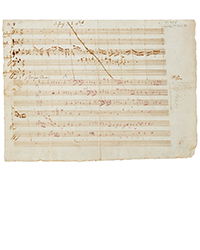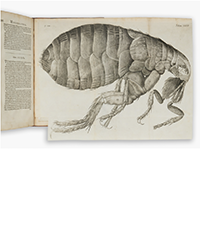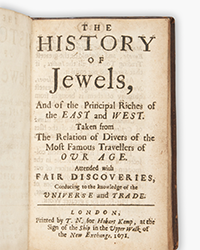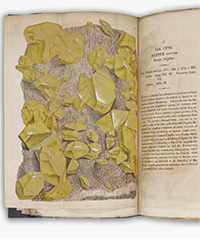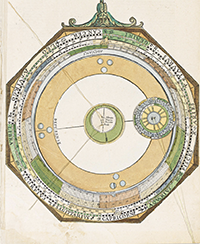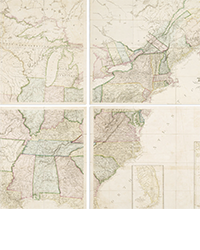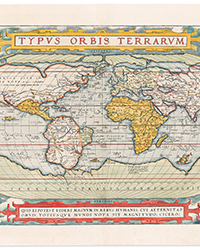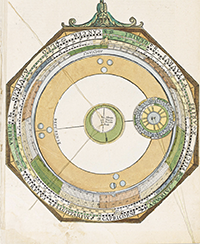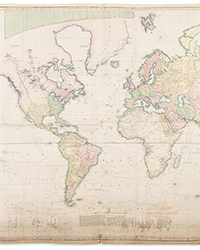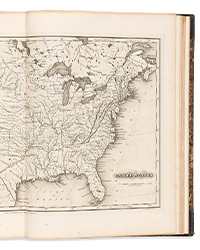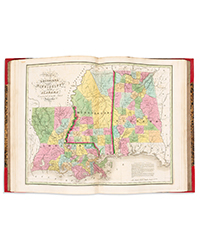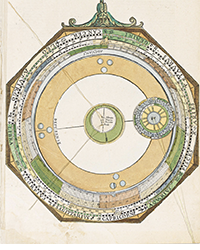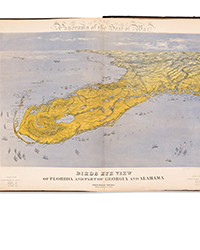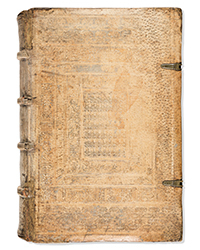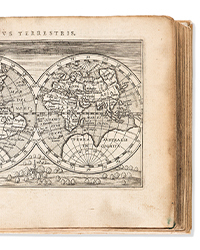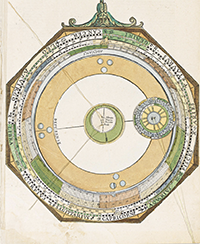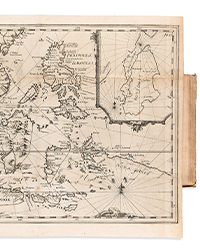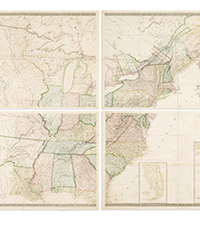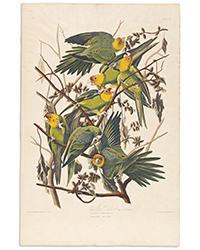Smithsonian exhibit examines U.S. expansion into Hawaii, Puerto Rico, the Philippines, Guam and Intervention in Cuba
1898: US Imperial Visions and Revisions is at the National Portrait Gallery in Washington, DC through Feb. 25, 2024. This is the first major Smithsonian museum exhibition to examine the War of 1898 (often called the Spanish-American War), the Congressional Joint Resolution to annex Hawaii (July 1898), the Philippine-American War (1899–1913) and the legacy of this controversial chapter in history.
The exhibit uses the lens of portraiture and visual culture to present “more than 90 objects representing the perspectives of those who advocated for overseas expansion, those who opposed it and those who tried to have agency over their political futures when the United States brought Cuba, Guam, Hawaii, Puerto Rico and the Philippines into its sphere of power.”
Substantial portions of the exhibit and associated text as well as some audio can be accessed on line at 1898exhibition.si.edu/gallery
Area specialists in these locales will find the visual portion of the exhibit exciting and informative. The section headed “Consumer Culture” displays many images of associated ephemera from the period which should interest dealers and collectors.
We’ve condensed portions of the exhibit’s online text to give our readers a taste of the narrative, and followed that up with some dealer-ish information on a standby from the period: Our Islands and Their People, a large format two volume set of books published in 1899. This set is packed with maps, plates and photos covering a lot of the same turf as the exhibit, but from the jingoistic American view that was typical of the era.
Synopsis of the exhibit
Prelude to Empire: “The Indian Wars of the 1870s became training grounds for U.S. military personnel involved in the War of 1898 and the Philippine-American War. Twenty-six of the thirty generals who served in the Philippines between 1898 and 1902 had some military experience in the West during the campaigns against Native Americans. U.S. governance in the Philippines, Cuba, and Puerto Rico was modeled on policies designed to restrict or strip away Native American rights.”
Sea Power: “Achieving sea power was easier said than done. Following the Civil War (1861–65), the U.S. Navy languished, and in 1886, it maintained only thirty-eight active ships. Spurred by the financial crisis following the Panic of 1893, however, Congress and the executive branch instituted an aggressive shipbuilding policy, aiming to bolster the economy through overseas trade.
Between 1897 and 1898, the U.S. Navy built eighty-eight warships, bringing the total to an impressive fleet of 160 vessels... Before creating this superior naval force, the United States would have had little capacity to wage an overseas war against a major imperial power. However, during the War of 1898, this new naval power ensured its decisive victories against Spain.
Cuba: Most countries in Spanish America had waged wars of independence by 1826. In Cuba, however, the powerful classes remained loyal to the Spanish Crown, who vowed to protect them and the sugar economy from a revolution like the one led by enslaved people in Haiti (1791–1804). Things changed in 1868, when the first of the three Cuban wars of independence broke out in reaction to new tariffs imposed by Spain, which had caused Cuba’s economy to falter. Social discontent and a burgeoning sense of Cuban national identity coalesced into a formidable force, culminating in the third Cuban War of Independence (1895–98).
Republic or Empire? Remember the Maine: “On February 15, 1898, the USS Maine exploded and sank in Havana Harbor, claiming the lives of more than 260 sailors. Many U.S. newspapers rushed to blame the tragedy on Spain. The headline of the World asked, “Maine Explosion Caused by Bomb or Torpedo?” while the New York Journal declared, “Destruction of the Warship Maine Was the Work of An Enemy.”...“Remember the Maine!” became a rallying cry for war, ignoring those who dissented. A U.S. naval board of inquiry determined that a Spanish mine had caused the explosion, and on April 25, 1898, the United States declared war on Spain. After a ceasefire in August, the United States began to negotiate the conditions of the peace treaty. A national debate ensued around the country’s proposal to annex Puerto Rico, Guam, and the Philippines, all of which were Spanish colonies.
Hawaii: “Queen Liliuokalani (1838–1917) became Hawaii's first female monarch on January 29, 1891, and was respected by Kanaka Maoli (Native Hawaiians), and foreign heads-of-state alike. However, she inherited a throne undermined by powerful Anglo-American settlers, whose business interests influenced local Hawaiian affairs. Seeking to reestablish the primacy of the Hawaiian monarchy that had ruled since King Kamehameha 1 had united the archipelago in 1810, the Queen introduced a new Constitution on January 14, 1893. Three days later, her opponents—assisted by the U.S. military— staged a coup, imprisoning the Queen and eventually forcing her to abdicate. The “Republic of Hawaii” was established on July 4, 1894.
On July 7, 1898, Congress approved a joint resolution to annex Hawai‘i, marking the culmination of more than a century of foreign threats to the archipelago, including those by the United States, as well as France, Germany, Great Britain, and Japan. The “Republic of Hawaii” was renamed the “Territory of Hawaii” on April 30, 1900 by statute, and eventually became a state in 1959. To this day, many Kanaka Maoli consider the “joint resolution for annexation” illegal, and they question the legitimacy of Hawaiian statehood, deeming it an occupation.
Puerto Rico: “Puerto Rico and Cuba were the only remaining Spanish colonies in the Americas after 1826. Puerto Ricans bet on colonial reform, but the Spanish monarchy undercut their aspirations through strict political rule. In 1868, separatists organized an armed insurrection, El Grito de Lares (the Cry of Lares), declaring Puerto Rico independent, but Spanish authorities quelled the revolt. Thereafter, most of Puerto Rico’s political class advocated for autonomy. In 1897, their struggle bore fruit when Spain granted the island its Carta Autonómica with ample political, administrative, and economic powers. However, on July 25, 1898, the charter was rendered moot when U.S. troops landed in Guánica.
Consumer Culture section shows lots of associated ephemera
“In the United States, the War of 1898 inspired a vibrant market for maps, whimsical trinkets, and board games that were sold for entertainment and distributed to boost national pride. People played games in which territories and coaling stations could be conquered. While reading daily news reports, they tracked military campaigns using interactive maps. Trading cards and other novelties used portraiture to heroicize the U.S. military leaders of the war.
“The War of 1898 was over in a matter of months, but the production of consumer objects continued into the first decades of the 20th century, mainly in the form of books on the “new possessions.” As time marched on, publications and other products confirmed the War of 1898 as a triumphant event in U.S. history, one reflecting U.S. military might, territorial expansion, and political power.
Philippines: “In the peace treaty after the War of 1898, Spain sold the Philippines to the United States for $20 million. As in the case of Puerto Ricans, Cubans, and Chamoru (the Indigenous people of the Mariana Islands, including Guam), Filipinos were not represented in the peace negotiations. Consequently, beginning in 1899, Filipinos waged a war of resistance against the United States, known as the Philippine-American War. Although the United States claimed victory in 1902, fighting persisted through the 1913 Battle of Bud Bagsak, with hostile engagements continuing even after that date. The Philippines did not attain independence until July 4, 1946.
Guam: “In 1898, after three hundred years of colonization by the Spanish, the island of Guam became a U.S. territory and has remained one ever since. Part of the Mariana Islands archipelago in Micronesia, Guam is located on the seven-thousand-mile ocean route between San Francisco, California, and Manila, in the Philippines. Guam’s natural harbor made it a critical coaling station for steampowered vessels in 1898. The first of thirty-eight U.S.-appointed naval governors of Guam, Richard P. Leary, began his rule on August 7, 1898….Today, the United States maintains military installations in Guam, making approximately one-third of the island inaccessible to its Chamoru (the indigenous people of the Mariana Islands) and Guamanian populations.
Codifying Empire: “The War of 1898 ended when the Treaty of Paris was signed by Spain and the United States on December 10, 1898. The United States gained sovereignty over Puerto Rico, the Philippines, and Guam, and promised Cuba the right to independence after a period of military occupation.
“As the United States assumed control of these islands and annexed Hawai‘i, the issue of empire continued to be contested, especially in the 1900 presidential election….The 1901 Supreme Court’s decisions in the Insular Cases justified the power of Congress over the “new possessions” and the selective application of U.S. constitutional protections in lands now defined as “unincorporated territories.” The constitutionality of the Insular Cases and the colonial framework they established are still debated today.”
Books on how it looked in 1899 - Our Islands and their People
As it says in the Consumer Culture section, popular interest in the war extended well into the beginning of the 20th century and many books were published both for adults and children depicting the military events and the scenic glories of the new acquisitions.
Of these, none proved more popular and enduring than Our Islands and Their People as Seen with Camera and Pencil. This work was published by ND Thompson in 1899 as a large format two volume hardback set. It was edited by William S. Bryan with narratives by Jose de Olivares.
It has a long detailed text which today seems more like patriotic propaganda than history, but the photos, color plates and maps are still as descriptive and wonderful as they were more than 120 years ago. Altogether there are over a thousand images which give fascinating glimpses of America’s new possessions.
In 2023 prices for Our Islands and their People start below $30 (plus shipping) for an individual volume in shabby condition to over $600 for the set in pristine condition. As dealers who specialize in this area can attest, a shabby breaker copy with the maps and plates intact can return many times its purchase price when the color prints and maps are offered individually.
Depending on your clientele and geographic interests you may want both volumes. But sometimes it's better to acquire just the one with the content you desire. Volume 1 is Cuba and some of Puerto Rico. Volume 2 contains more about Puerto Rico, and a great deal about Hawaii and the Philippines. An especially nice visual display of the contents of this set can be found offered by Schilb Antiquarian Books in Columbia, MO.
Their presentation shows all of the maps and many of the color plates. Additionally there are hundreds and hundreds of black and white photos running with the text in sizes large and small.
As a person who has handled the Hawaii portion many times I have never tired of the photos showing many island scenes and a way of life long vanished. I have sold both the color and black and white images for very decent prices, especially if they are matted. A note of caution, when describing this material as individual pieces it is important to note its source.


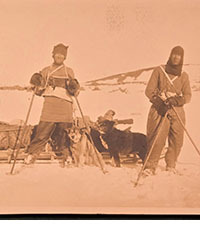
![<b>Scandinavian Art & Rare Books Auctions, Dec. 4:</b> ROALD AMUNDSEN: «Sydpolen» [ The South Pole] 1912. First edition in jackets and publisher's slip case. <b>Scandinavian Art & Rare Books Auctions, Dec. 4:</b> ROALD AMUNDSEN: «Sydpolen» [ The South Pole] 1912. First edition in jackets and publisher's slip case.](https://ae-files.s3.amazonaws.com/AdvertisementPhotos/0a99416d-9c0f-4fa3-afdd-7532ca8a2b2c.jpg)
![<b>Scandinavian Art & Rare Books Auctions, Dec. 4:</b> AMUNDSEN & NANSEN: «Fram over Polhavet» [Farthest North] 1897. AMUNDSEN's COPY! <b>Scandinavian Art & Rare Books Auctions, Dec. 4:</b> AMUNDSEN & NANSEN: «Fram over Polhavet» [Farthest North] 1897. AMUNDSEN's COPY!](https://ae-files.s3.amazonaws.com/AdvertisementPhotos/a077b4a5-0477-4c47-9847-0158cf045843.jpg)
![<b>Scandinavian Art & Rare Books Auctions, Dec. 4:</b> ERNEST SHACKLETON [ed.]: «Aurora Australis» 1908. First edition. The NORWAY COPY. <b>Scandinavian Art & Rare Books Auctions, Dec. 4:</b> ERNEST SHACKLETON [ed.]: «Aurora Australis» 1908. First edition. The NORWAY COPY.](https://ae-files.s3.amazonaws.com/AdvertisementPhotos/6363a735-e622-4d0a-852e-07cef58eccbe.jpg)
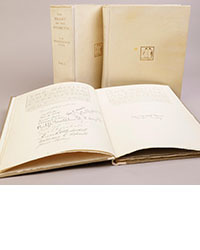
![<b>Scandinavian Art & Rare Books Auctions, Dec. 4:</b> SHACKLETON, BERNACCHI, CHERRY-GARRARD [ed.]: «The South Polar Times» I-III, 1902-1911. <b>Scandinavian Art & Rare Books Auctions, Dec. 4:</b> SHACKLETON, BERNACCHI, CHERRY-GARRARD [ed.]: «The South Polar Times» I-III, 1902-1911.](https://ae-files.s3.amazonaws.com/AdvertisementPhotos/3ee16d5b-a2ec-4c03-aeb6-aa3fcfec3a5e.jpg)
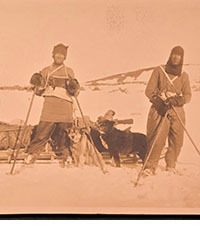
![<b>Scandinavian Art & Rare Books Auctions, Dec. 4:</b> [WILLEM BARENTSZ & HENRY HUDSON] - SAEGHMAN: «Verhael van de vier eerste schip-vaerden […]», 1663. <b>Scandinavian Art & Rare Books Auctions, Dec. 4:</b> [WILLEM BARENTSZ & HENRY HUDSON] - SAEGHMAN: «Verhael van de vier eerste schip-vaerden […]», 1663.](https://ae-files.s3.amazonaws.com/AdvertisementPhotos/d5f50485-7faa-423f-af0c-803b964dd2ba.jpg)
![<b>Scandinavian Art & Rare Books Auctions, Dec. 4:</b> TERRA NOVA EXPEDITION | LIEUTENANT HENRY ROBERTSON BOWERS: «At the South Pole.», Gelatin Silver Print. [10¾ x 15in. (27.2 x 38.1cm.) ]. <b>Scandinavian Art & Rare Books Auctions, Dec. 4:</b> TERRA NOVA EXPEDITION | LIEUTENANT HENRY ROBERTSON BOWERS: «At the South Pole.», Gelatin Silver Print. [10¾ x 15in. (27.2 x 38.1cm.) ].](https://ae-files.s3.amazonaws.com/AdvertisementPhotos/fb024365-7d7a-4510-9859-9d26b5c266cf.jpg)
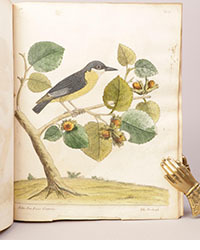
![<b>Scandinavian Art & Rare Books Auctions, Dec. 4:</b> PAUL GAIMARD: «Voyage de la Commision scientific du Nord, en Scandinavie, […]», c. 1842-46. ONLY HAND COLOURED COPY KNOWN WITH TWO ORIGINAL PAINTINGS BY BIARD. <b>Scandinavian Art & Rare Books Auctions, Dec. 4:</b> PAUL GAIMARD: «Voyage de la Commision scientific du Nord, en Scandinavie, […]», c. 1842-46. ONLY HAND COLOURED COPY KNOWN WITH TWO ORIGINAL PAINTINGS BY BIARD.](https://ae-files.s3.amazonaws.com/AdvertisementPhotos/a7c0eda0-9d8b-43ac-a504-58923308d5a4.jpg)
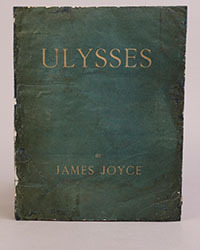
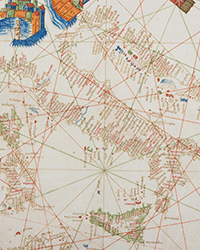
![<b>Sotheby’s, Dec. 11:</b> Darwin and Wallace. On the Tendency of Species to form Varieties..., [in:] <i>Journal of the Proceedings of the Linnean Society,</i> Vol. III, No. 9., 1858, Darwin announces the theory of natural selection. £100,000 to £150,000. <b>Sotheby’s, Dec. 11:</b> Darwin and Wallace. On the Tendency of Species to form Varieties..., [in:] <i>Journal of the Proceedings of the Linnean Society,</i> Vol. III, No. 9., 1858, Darwin announces the theory of natural selection. £100,000 to £150,000.](https://ae-files.s3.amazonaws.com/AdvertisementPhotos/00d5fd41-2542-4a80-b119-4886d4b9925f.png)

